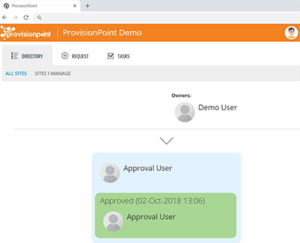3 Ways to Improve Microsoft 365 Compliance
Microsoft 365 Compliance is Critical
Organisations continue to adopt cloud computing technologies for productive, efficient, collaborative remote working, courtesy of commercially tailored suites, such as Microsoft 365 Enterprise.
While the wide range of seamless, familiar, easy-to-grasp and user-intuitive features of Microsoft 365 promotes user self-service and rapid adoption, how can user adherence to legal and regulatory requirements be monitored and managed, in particular with the ever increasing rise in remote working?
We know compliance remains one of the most critical aspects of your business. Failing to consider compliance regulations, particularly in the cloud, can be both costly and risky to your business. In fact, according to a recent study, True Cost of Compliance with Data Protection Regulations, since 2011 there has been a 45% increase in non-compliance costs.
So, where do you start? Answer: With proper governance.
With a proper governance structure in place, compliance managers and IT Admins can:
- identify the legal and compliance requirements that users need to adhere to when using company IT resources
- customise workspaces, classification and security settings within Microsoft 365 to enable users to comply with the agreed requirements
- provide users with relevant training to ensure communications are structured, content is correctly classified and saved using proper naming conventions and storage locations
- monitor the ways employees adhere to compliance requirements and resolve instances where this isn’t happening.
Sounds complicated! But the good news is, help is at hand! ProvisionPoint 365 brings powerful compliance management to Microsoft 365, with top-down control for administrators and seamless experiences for users.
Three Ways ProvisionPoint 365 Can Help Your Organisation Improve Compliance within Microsoft 365
1.) Leverage Service Timelines, Site Statistics and Site Directories
To meet corporate compliance policies, your organisation needs to keep tabs on the relentless changes happening within your Microsoft 365 workspaces, such as new lists or libraries, more channels, planner tasks, updating permissions, and more.
ProvisionPoint 365 empowers users to safely manage change in Microsoft 365. Actions can be performed that are centrally defined, but actionable by any permitted user. Everyone can be an administrator, with zero risk.
With the Service Timeline feature, every action completed in ProvisionPoint Enterprise is tracked where you can easily see all the details and change history.
You can use the Site Statistics dashboard to visualise key statistics on provisioning requests, such as number of Sites being created, approval requests being made and usage trends. And you can create and maintain a global Site Directory to browse and navigate your site structure easily and find information quickly.
Watch our video to view usage trends in the ProvisionPoint 365 dashboard.
2.) Keep Everyone informed with Approval Workflows
Most organisations have approval processes or workflows in place for signing off the content of a document – especially if the document is to be shared externally.
Ideally, there should be a workflow in place when it comes to managing workspaces or Sites in Microsoft 365, too. After all, if you can implement approval on documents, why can’t you do this for documents?
ProvisionPoint 365 solves this problem by providing the ability to build an Approval or Authorisation Workflow and associate it to any type of Site. New site requests or actions on existing sites can be orchestrated through clear approval processes. Workflows can route approval to different users depending on the type of site created.
3.) Simplify the Classification Processes
When users are creating or requesting to create an Object or Workspace in Microsoft 365 (e.g. a SharePoint Site, a Team in Microsoft Teams, or a Microsoft 365 Group), it’s important for both them and your organisation to know what it’s for and if it’s compliant with your corporate legal and regulatory requirements.
ProvisionPoint 365 empowers administrators to configure the form which is used to request SharePoint Sites, Office 365 Groups and Microsoft Teams. Each different request form in ProvisionPoint Enterprise can include different metadata columns that can be of different data types, including text, choice and people.
Classification data can help users to:
- understand the exact purpose of the workspace
- find the correct location to file-specific information easily
- control how an object is named, including setting the URL of a SharePoint and email address on an Office 365 Group.
- define the visual appearance of a SharePoint Site by setting a theme depending on a request form value.
It’s vital to ensure information is classified correctly and mapped to a consistent and relevant taxonomy for classification, as it makes it easier for users to find and understand the content.
Reduce Risk and Improve Compliance with ProvisionPoint 365
ProvisionPoint 365 can help your organisation have the confidence in using a Self-Service model to monitor and manage compliance in Microsoft 365.
You can reduce risk and maintain compliance by ensuring that sensitive data locations are secured and classified according to your organisational needs. You can also ensure the correct privacy is applied to all Objects and control which users are given access to newly provisioned objects and enable external access only where required.
If you would like to see how these powerful features of ProvisionPoint 365 can help you promote user self-service while managing your corporate compliance, contact us for a free demo today.


